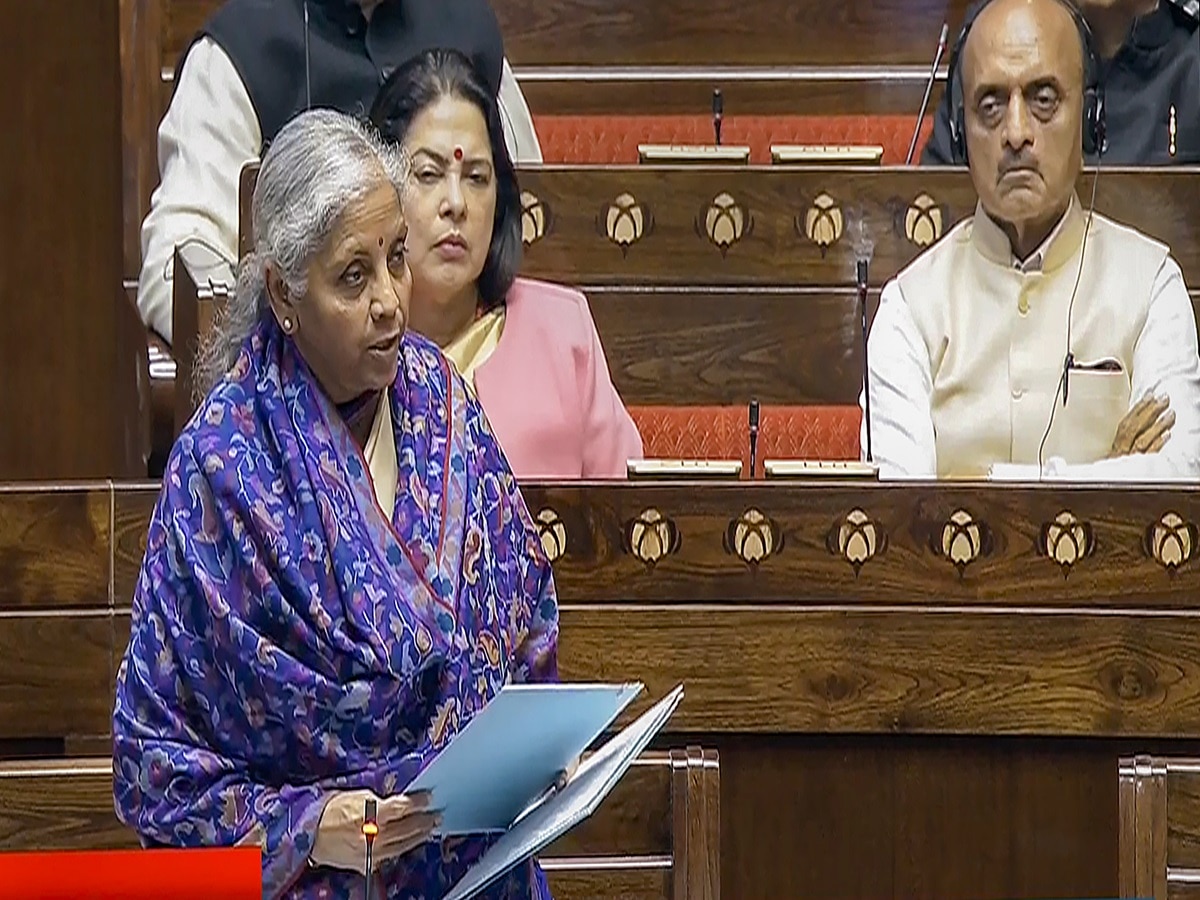The ‘White Paper’ highlighted a series of failures of the UPA government, while also outlining the steps taken by the NDA government to revive the economy, rebuild the nation’s image, and instill hope in the minds of the people.
New Delhi: Finance Minister Nirmala Sitharaman presented the ‘White Paper’ on economic mismanagement by the United Progressive Alliance (UPA) in Lok Sabha on Thursday. The White Paper compared the performance of the Indian economy under the previous UPA government and the current BJP-led NDA government. In a bid to shed light on the economic mismanagement during the UPA regime, FM Sitharaman tabled the ‘White Paper’ in both English and Hindi languages. The document highlighted a series of failures of the UPA government, while also outlining the steps taken by the NDA government to revive the economy, rebuild the nation’s image, and instill hope in the minds of the people.
According to the White Paper, the UPA government inherited a healthy economy in 2004. However, by the time the current government took over in 2014, the nation was facing a severe economic crisis. The document meticulously lays out the various factors contributing to this crisis, including mismanagement of funds, lack of policy reforms, and a decline in investor confidence.
“The UPA Government inherited a healthy economy ready for more reforms, but made it non-performing in its ten years. In 2004, when the UPA government began its term, the economy was growing at 8 per cent (with industry and services sector growth above 7 per cent each and a resuscitating agriculture sector growth above 9 per cent in FY04) amidst a benign world economic environment. The Economic Survey of 2003-04 noted, “The economy appears to be in a resilient mode in terms of growth, inflation, and balance of payments, a combination that offers large scope for consolidation of the growth momentum with continued macroeconomic stability”
The 59-page ‘White Paper on the Indian Economy’ said when the Modi government assumed office in 2014, the economy was in a “fragile state”; public finances were in “bad shape”; there was economic mismanagement and financial indiscipline, and widespread corruption. “It was a crisis situation. The responsibility to mend the economy step by step and to put the governance systems in order was enormous,” said the paper which was tabled by Finance Minister Nirmala Sitharaman in Parliament.
One of the key areas of concern highlighted in the White Paper is the UPA government’s failure to control inflation. It states that during the UPA regime, inflation reached alarming levels, causing a significant burden on the common man. In contrast, the NDA government implemented several measures to curb inflation and stabilize prices, leading to improved living conditions for the people.
The White Paper also points out the UPA government’s inability to address the issue of unemployment effectively. Furthermore, the White Paper highlights the UPA government’s failure to attract foreign direct investment (FDI) and boost economic growth. It states that during their tenure, FDI inflows were minimal, hindering the nation’s progress. In contrast, the NDA government implemented investor-friendly policies and initiatives, resulting in a significant increase in FDI and overall economic growth.
Key Points of Govt’s White Paper
- In 2014 when we formed the government, the economy was in a fragile state; public finances were in bad shape; there was economic mismanagement and financial indiscipline, and there was widespread corruption. It was a crisis situation.
- Every challenge of the pre-2014 era was overcome through our economic management and our governance. These have placed the country on a resolute path of sustained high growth. This has been possible through our right policies, true intentions, and appropriate decisions.
- There were numerous scams bringing colossal revenue losses for the exchequer and fiscal and revenue deficits spiralling out of control. In 2014, our government inherited a deeply damaged economy whose foundations had to be rebuilt to enable self-sustaining long-term economic growth.
- One of the most infamous and important legacies of the United Progressive Alliance (UPA) government led by former Prime Minister Dr Manmohan Singh was the banking crisis.
- The banking crisis was one of the most important and infamous legacies of the UPA government. When the Vajpayee-led NDA government took office, the Gross Non-Performing Assets (GNPA) ratio in Public Sector banks was 16.0 per cent, and when they left office, it was 7.8 per cent.
- The decade of the UPA government was a lost decade because it failed to capitalise on the strong foundational economy and pace of reforms left behind by the Vajpayee government.
- The potential of compounding growth never happened. It was a lost decade as the UPA government failed to gasp opportunities for technology led innovation.
- The Vajpayee government had set the baseline for telecom reforms. But at the time when the world was closing in on 3G, UPA was mired in the 2G scam, and the auctions had to be cancelled subsequently, the White Paper said.

